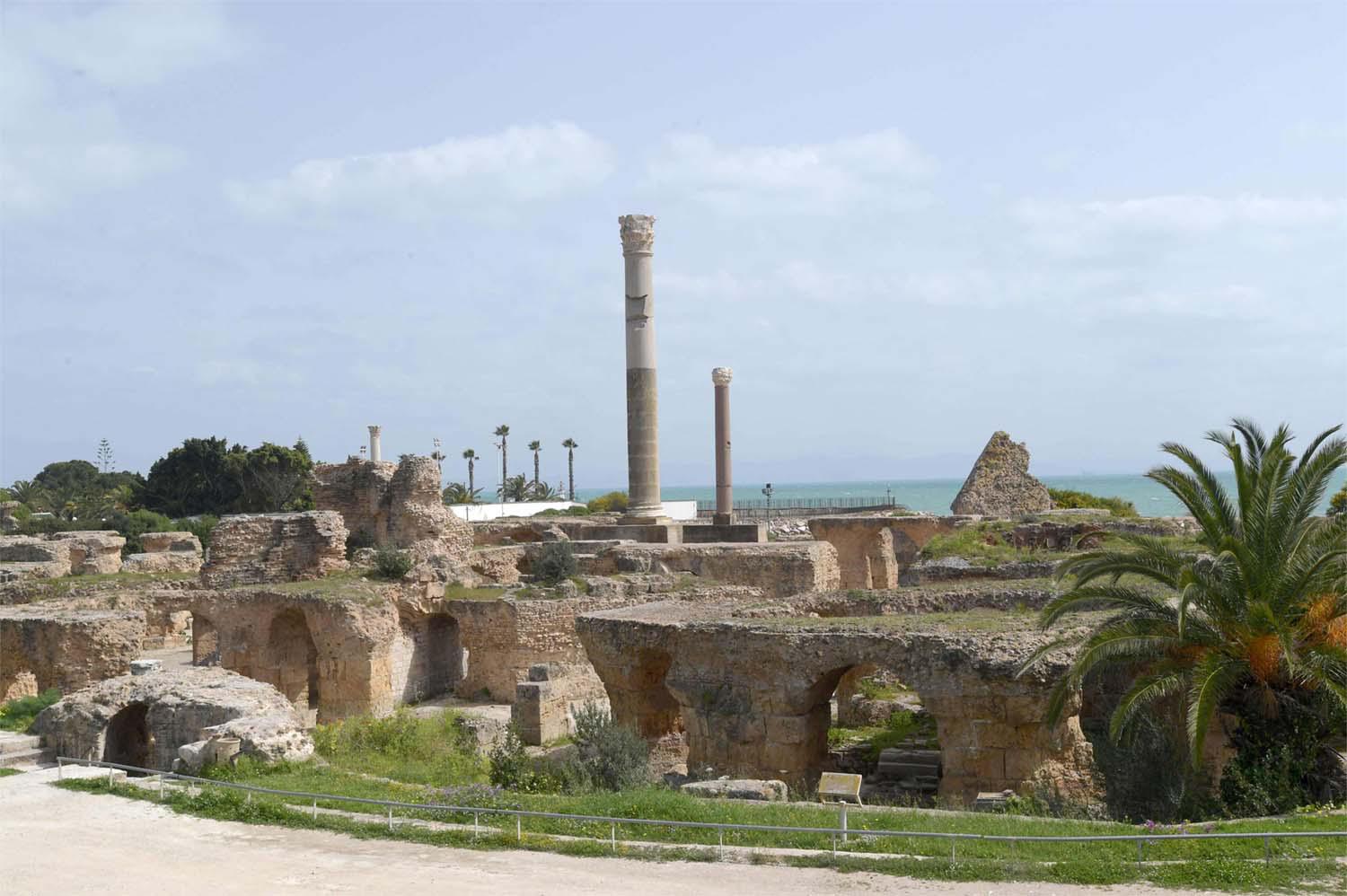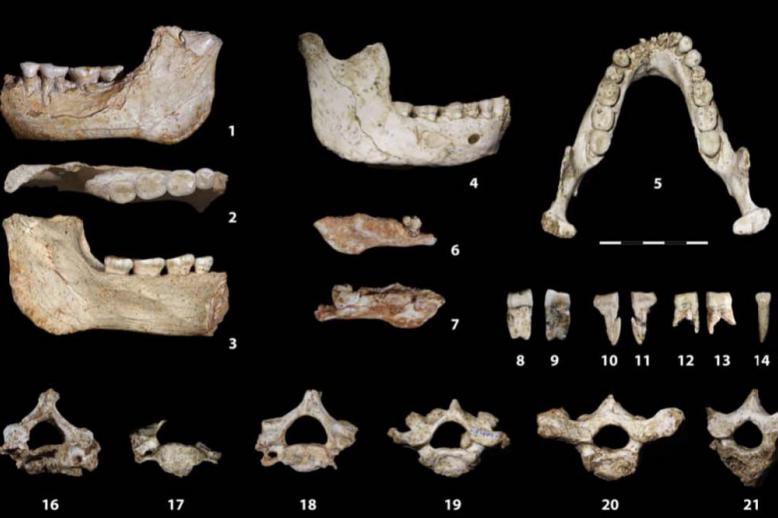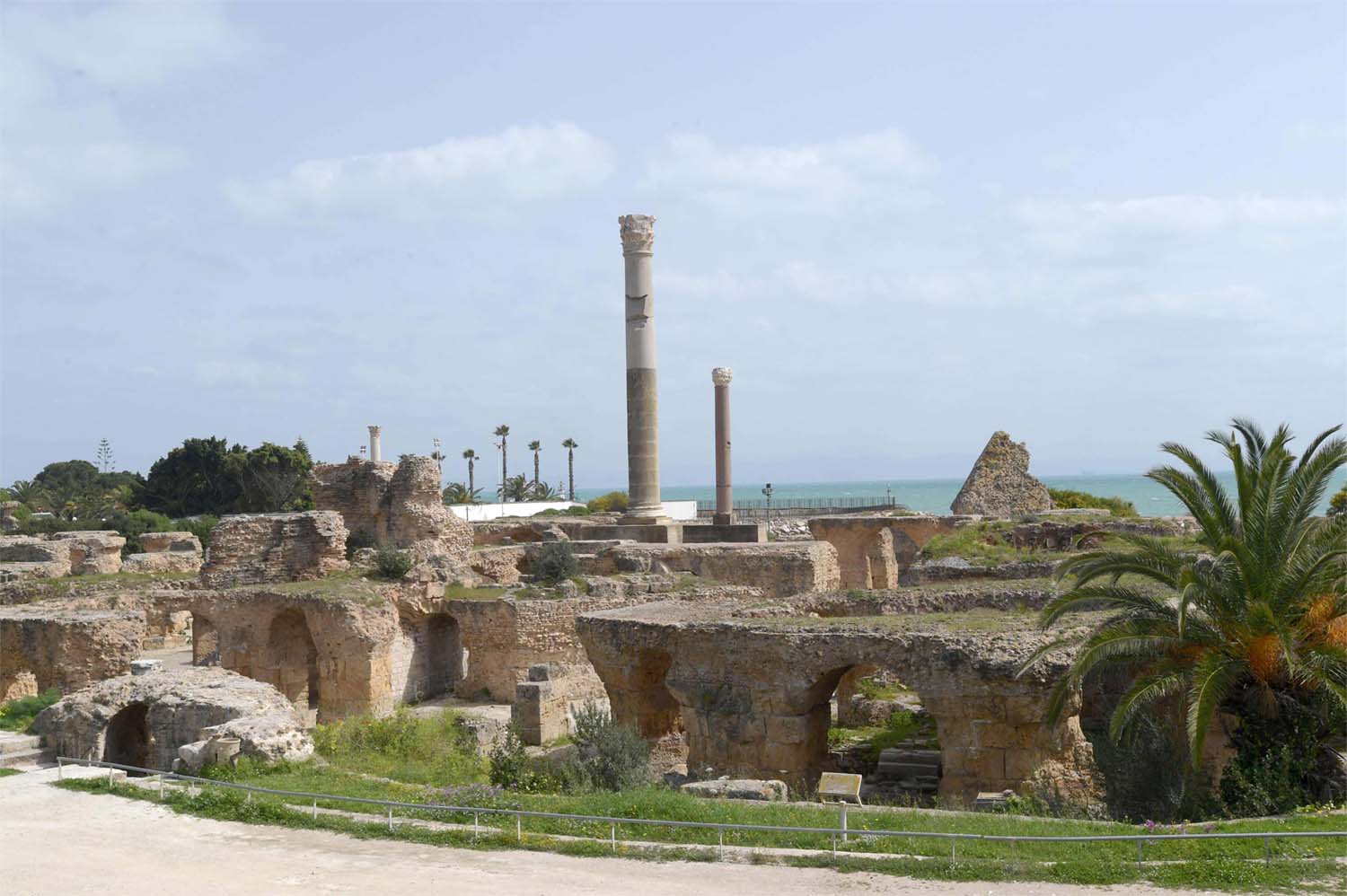Africa's heritage sites at risk of disappearing
NAIROBI - From the snow-capped peak of Mount Kilimanjaro to the ruins of the ancient Tunisian city of Carthage and Senegal's slave island of Goree, Africa has a wealth of iconic cultural and natural heritage sites.
But climate change impacts, from higher temperatures to worsening floods, now threaten to condemn these and dozens more African landmarks to the history books.
As rich nations scramble to protect their cultural landmarks from extreme weather and rising seas, African countries face additional hurdles such as funding shortages and a dearth of archaeological expertise, said conservationists and researchers.
"These sites are places that we learned about at school - they are our identity and history. They are irreplaceable. If we lose them, we will never get them back," said Nick Simpson, research associate at the African Climate and Development Initiative at the University of Cape Town.
"Africa has already experienced widespread losses and damages attributable to human-induced climate change: biodiversity loss, water shortages, food losses, loss of lives, and reduced economic growth. We can't afford to lose our heritage also."
Some historical landmarks have already succumbed.
For visitors to the historic colonial slave forts scattered along West Africa's coastline, an important ritual is to pass through the "Door of No Return" - a centuries-old doorway which leads directly from the citadel to the shore.
The custom pays homage to the millions of Africans who were forcefully taken from their homeland during the transatlantic slave trade, retracing their final steps as they were led from the dungeons through the door to slave ships - never to return.
But at Ghana's 18th century Danish slave-holding post, Fort Prinzenstein, the original metal doorway and an adjoining passageway is now missing.
"The main 'Door of No Return' has been washed away by the tidal waves a long time ago," said James Ocloo Akorli, caretaker of the UNESCO World Heritage site.
Africa has about a fifth of the world's population, but produces less than 4% of global carbon dioxide emissions, the major driver of climate change.
Despite this, the continent is disproportionately affected by climate impacts such as droughts and floods, underlining the need for countries to invest in projects that protect infrastructure and improve resilience.
At the COP27 U.N. climate summit in Egypt, which started on Sunday, world leaders will debate how much financial assistance rich countries should provide to developing nations to help them cope with the effects of global warming.
Typhoon, floods and erosion
There is no comprehensive data on the total number of African heritage spots at risk, but research co-led by Simpson on coastal sites found that 56 locations are already facing flooding and erosion exacerbated by rising sea levels.
By 2050, if greenhouse gas emissions continue on their current trajectory, this number could more than triple to 198 sites, said the study, published in the scientific journal Nature Climate Change in February.
Places at risk include the imposing ruins of the Numidian-Roman port of Sabratha in Libya, Algeria's ancient Punic-Roman trading post of Tipasa and Egypt's North Sinai archeological sites, the study found.
Kunta Kinteh Island in Gambia, and the Togolese village of Aneho-Glidji - both tied to Africa's slave trade history - are also in danger, it said.
A vast array of sites of exceptional natural value are also extremely vulnerable as higher temperatures melt glaciers, raising sea levels and bringing more coastal erosion.
These include rich biodiversity hubs such as Cape Verde's Curral Velho wetland with its unique vegetation and migratory birds and Aldabra in the Seychelles, one of the world's largest raised coral atolls, and home to the Aldabra giant tortoise.
"African sites are really, really in danger because of climate disruptions," said Lazare Eloundou Assomo, director of the UNESCO World Heritage Centre.
"We see typhoons, we see floods, we see erosion, we see fires. I would say climate change is one of the major challenges that world heritage is facing now - and in the future."
Assomo said he was particularly concerned about sites such as Africa's tallest peak, Mount Kilimanjaro, in Tanzania, which is expected to lose its glaciers by 2040 and is experiencing increased outbreaks of wildfires.
Heritage, tourism at stake
As climate change threatens the future of Africa's natural and cultural riches, jobs and tourism linked to the heritage sites are also being jeopardised.
This could spell disaster for attractions such as Ghana's slave forts, Namibia's indigenous rock art, and the wildebeest migration in Kenya's Maasai Mara, which together draw droves of visitors and millions of dollars in annual tourism revenues.
In Ghana, for example, the castles have not only shaped the country's history but have also become pilgrimage sites for the African diaspora looking to reconnect with their roots and honour their forefathers.
Events such as Ghana's "Year of Return" in 2019, to mark 400 years since the first recorded African slaves arrived in the Americas, saw record numbers of African-Americans and European Africans visiting the country for heritage tours.
In Namibia, tens of thousands of visitors arrive each year to see some of Africa's largest collections of rock art, generating much-needed income for local communities in the sparsely populated southern African nation.
The ancient rock paintings and engravings, including the UNESCO World Heritage Site, Twyfelfontein, were created by San hunter-gatherers long before Damara herders and European colonialists arrived.
But archaeologists fear climate-linked flash floods, dust, vegetation growth, fungus and desert animals seeking water close to these sites pose a threat to the art's survival.
From Indonesia to Australia, archaeologists have found climate change impacts such as more variable temperatures, flooding and wildfires are causing blistering, peeling, and even rock explosions at important sites of ancient art.
Independent Namibian archaeologist Alma Mekondjo Nankela fears the same lies in store for her nation's rock art heritage.
"We can really see that the artwork is deteriorating and it's deteriorating actually very fast," she said, adding that most of the factors causing the deterioration were "likely linked to climate change."
She added that urgent funding and resources were needed to further understand and track long-term climate changes over the years.
In Kenya, one of world's most famous natural heritage attractions - the mass migration of the wildebeest - is also at risk, say wildlife conservationists.
The migration, one of the greatest spectacles of animal movement on earth, sees hundreds of thousands of wildebeest, zebra and gazelle making their annual trek from Tanzania's Serengeti National Park across the border into the Maasai Mara in Kenya.
The sight attracts hordes of safari-goers every year, eager to witness the iconic scenes of the wildebeest that run the gauntlet of hungry Nile crocodiles as they cross the Mara river.
Tourism - much of it centred on Maasai Mara safaris - is a key economic pillar for Kenya, providing more than 2 million people with jobs and accounting for about 10% of the East African nation's gross domestic product (GDP).
But conservation experts say the great migration is under threat due to increased droughts and floods in the Mara's delicate ecosystem, which is depriving the wildebeest of grazing land.
This has affected the number of animals migrating to Kenya, and the period they stay for.
"The wildebeest migration is happening later and they stay for a very short time," said Yussuf Wato, wildlife programme manager at conservation nonprofit WWF Kenya.
"And then, because the rain has delayed to come to the Mara, or the rainfall in the Serengeti is prolonged, they do not come to the Mara as they have sufficient pasture on the other side."
More research, resources needed
But despite the potentially far-reaching consequences of climate-related loss and damage to Africa's heritage sites, the threats have gained much less attention than risks for other cultural and natural landmarks in richer nations.
One study estimates that only 1% of research on the impacts of climate change on heritage is related to Africa, despite the fact that the continent has been on the frontlines of global warming for decades.
"We need more national archaeologists," said David Pleurdeau, an assistant professor at France's National Museum of Natural History in the human and environment department, leading an archaeological team in the Erongo region of Namibia. "We need more training for Namibian students, funding, and for the Namibian Heritage Council to employ more archaeologists," said Pleurdeau, who works with Namibian archaeologist Nankela.
Some countries such as Ghana and Egypt have made heavy investments in the construction of sea defence walls and groins to protect their coastal sites.
But Simpson said such "hard protection" strategies often do not take into account future sea levels and can distort the site's natural ecological equilibrium.
Hybrid protections that include natural infrastructure such as rock walls combined with saltmarshes, seagrasses or restored mangroves to slow the action of waves, can be more effective.
It is also essential to improve governance around threatened sites and ensure local communities are involved in preservation and protection efforts, he added.
Back at Fort Prinzenstein, the caretaker Akorli points to some words etched on the dilapidated back wall of one of the few remaining slave dungeons: "Until the lion has his historian, the hunter will always be a hero," it reads.
"Often history can be distorted," said Akorli. "Sites like these tell us the painful truth. This is why we need to look after them - we need to know what happened in the past, so that we can learn in the future."






